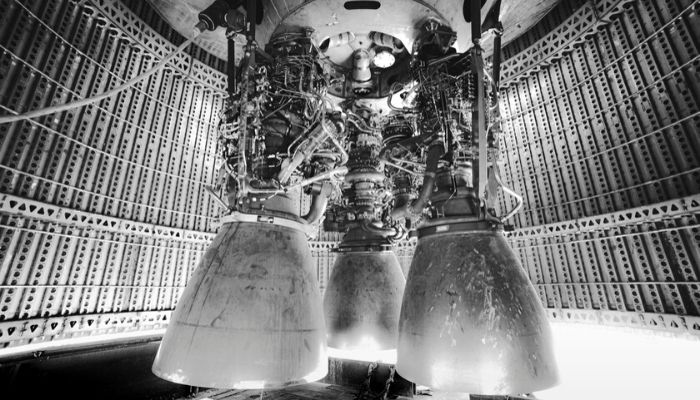
On 6 May, the Raptor engine, powered by LNG and liquid oxygen, mounted on the prototype Starship SN4, was switched on and off at a standstill, without take-off. It was announced by Elon Musk, the innovative South African entrepreneur, who provided photos, videos and information about the Starship project being tested by his company SpaceX.
In the picture we publish you can see the Raptor engine inside the SN4 Starship, in the middle of a compartment with a diameter of about 9 meters, successfully tested in the Boca Chica test site in Texas.
Elon Musk also announced that during future tests it will not be necessary to burn natural gas, as can be seen from the tower on the right of the video, replaced by electricity provided by photovoltaic modules.
Previously, last July 2019, after stationary tests, a test of the Raptor, mounted on the Star Hopper prototype, took off at a height of up to 150 meters. Star Hopper also manoeuvred in order to land, always in vertical position, on a different position from the take-off one.
Also for Starship SN4 the next step will be a test with take-off up to 150 meters, followed by another launch, still unmanned, which will reach a height of about 20 kilometers. For this second experiment the prototype will be the Starship SN5, equipped with six Raptor engines.
To overcome the Earth's gravitational force, the final Starship will have to be mounted on another much more powerful vector, the Super Heavy, equipped with at least 30 Raptor engines.
Super Heavy and Starship will be completely reusable, making space travel much cheaper than today. In addition to the cruises of paying tourists, the main objective of Elon Musk is Mars, to which he plans to launch fleets of spaceships every 26 months. The interval is necessary for the correct alignment of the Earth with the Red Planet, where human beings will be transferred and cities created.
Meanwhile, NASA, the United States space agency, has entrusted SpaceX with the task of bringing astronauts to the Moon by 2024, as part of the new Artemis exploration program. The contract provides for the Starship to be equipped with a spacecraft for landing on the lunar surface and transporting robots for cargo handling.
Source: Globalscience
 EN
EN  it
it

